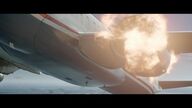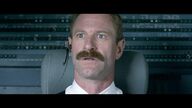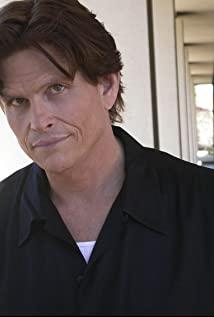Storytelling - this is indeed the most laudable part of this film. It uses textbook-like film language, through exquisite narrative structure, superb acting skills, and precise audio-visual language to tell a story that is not suspenseful. , it is an epic re-creation of a well-known hero.
**********[How would Eastwood tell a story without suspense] **********
Saying that the film has no suspense is not necessarily complete. Why Sally is a hero, and how Sally is whitewashed in the face of the aggressive investigation team, is the biggest suspense in the film.
Therefore, around this core suspense, the film sets up three NTSB hearings to set up, interpret and solve this suspense. Of course, for the audience, after witnessing the process of Sally being investigated and whitewashed, they recognized Sally as a hero, and the director succeeded in creating a god. Naturally, the mood of the film has its ups and downs.
Before and after the three hearings in the film, director Eastwood arranged a total of five flashbacks. Each flashback tells different perspectives, expressions, and focuses on content, and each has a different role.
Here is the big structure of the film: Flashback 1, Hearing 1, Flashback 2, Hearing 2, Flashback 3, Flashback 4, Hearing 3, Flashback 5
[For the first time] At the beginning of the film, a passenger plane is thrilling Flying through the high-rises of New York, the wing rubs against a house before it crashes, and Captain Sully wakes up from his nightmare. This is the first time the film flashes back to the landing process of flight 1549. The first perspective and virtual scene describe the urgency of the situation and the seriousness of the consequences from the side of the captain's nightmare.
What can the audience receive from the sudden nightmare? How terrifying it would be to fail a forced landing, and the pressure the captain would be under before and after. In the first flashback, I told the audience that although there were no casualties in reality, the incident itself was very critical. Here is the standard Hollywood narrative, and the perspective switches to the most exciting picture presentation at any time, just to tell you how terrible the crash is.
After the first flashback, the captain went for a morning run, washed up, and went out for the hearing, which ended with him and the co-pilot sitting in a taxi at night. Needless to say, the 2-minute hearing in the picture actually lasted a whole day.
[Second time] The hearing on the second day is about to start, and Sally is still distracted. He was waiting for the hearing to begin, but through the window he dazedly "saw" flight 1549 passing in front of him. Although the result is still a crash, the camera perspective is completely different from the first conventional perspective. The camera description of the crash was completely completed by Sally alone. The shot consists only of Sally and Sally's subjective shot, with no bystander's perspective. This is a very subjective description, just a paragraph designed to describe what Sally is doing and thinking: Sally was in a high-rise building, and he "saw" the plane he controlled crashed, indicating that Sally was thinking calmly .
What will the audience receive? The pressure of the failed forced landing was so great that it even disturbed Captain Sally, who was always calm. At the same time, he told the audience that Sally needs to clean up for himself, but he has no clue. The audience also needs to help find clues together to clean up Sally and make him a real hero.
After the second flashback, Sally called his wife after participating in the Tv Show and told her that he might have done something wrong, and that he would lose his pension in addition to his career.
[Third time] In the phone call to his wife, Sally began to recall seriously, starting from the canteen he went to before boarding the plane, and ending abruptly when the plane plunged into the water. The writing and ink described in the whole paragraph mainly focus on the content before the forced landing, and pay more attention to the reactions of the passengers and the tower. The third flashback is still the first point of view, expressing that every passenger is alive and recalling that the tower's instructions to return to the airport are very clear. By the way, I personally think that this kind of flashback is very common in life: "Let me think about it from scratch". This arrangement is really reasonable.
Naturally, in the third flashback, the audience's attention shifted from the terrible consequences of the crash to the sober and objective analysis of "Let me start over." The pictures no longer have eye-catching explosions and screams from the crowd. They are all daily details, customers in the canteen, boarding broadcasts, and countless useful and useless details inside and outside the painting. The director is to let the audience and Sally find clues to redeem Sally from countless irrelevant details.
After the third flashback event, Sally hung up the phone with his wife. Sally continued to run at night. When he ran across a bridge, the white smoke behind him showed a huge background of Sally. Needless to say, how much psychological Sally took on pressure, and he ran into a bar.
[Fourth time] Sally was watching TV news in the bar, which was different from the previous three. The fourth flashback begins with the boat involved in the rescue and describes the entire rescue process. It does not end until Sally leaves the scene of the accident and arrives at the hotel where he stayed that night. After being hugged by the waitress, he returns to his room and turns on the hotel TV.
In the fourth flashback, the cut-in perspective used the news perspective, the subjective perspective of the rescue helicopter and the rescue ship. These are relatively objective perspectives, but when the first rescue ship touched the life raft, these objective perspectives were called. Stopped, subjective and warm music sounded. The fourth flashback borrowed the relatively objective perspective of news reports to describe the entire rescue scene along the way. It not only leaves a gap for the back, but also clearly explains the rescue that has to be expressed through the perspective of news.
In the fourth flashback, the audience's attention naturally transitioned from objective news images to subjective lyrical music. Borrowing from news reports and the attitude of the hotel staff, the audience naturally felt that the captain was not wrong, he saved the lives of 155 passengers, so why did the investigation team not let it go? From here, the film starts to emphasize the above-mentioned suspense. Why did the investigation team investigate Sally, did Captain Sally really do something wrong, and how would he clean up himself?
At the end of the fourth flashback sequence, Sally turns on the TV in the hotel, only to hear "Timing" from the TV news in the bar. Sally finds the crux. He then called on the road and demanded that the on-board recordings be scheduled to be played at the hearing.
[Fifth time] In the final and largest hearing, the recording began to play, from the "bird strike" to the stop of the plane, and the first officer's frightened expression ended. The content of the entire flashback is highly concentrated on Sally and the cockpit. There is neither drag before boarding nor tears of rescue after the forced landing. There is not even a picture of the cabin, only a voice-over is used to describe that the flight attendants were talking to the passengers at that time. shout. In addition, the fact that the two engines failed at the same time also gave a clear account for the first time. Needless to say, the fifth use of the flashback from the recording has the most objective perspective and the most compact narrative.
What can the audience of the film perceive? Just by giving the audience so many tense back shots of facial expressions at the hearing, the audience of the film can follow the emotions of the audience at the hearing. Not to mention the clear recording and editing and the in-place footage, by the way One sentence, the narrative logic of the shots here, the pictures are based on the recordings, just to highlight the scenes of the recordings. This is completely reversed from the narrative logic of the previous flashbacks.
[Combing five flashbacks] The first time is a standard Hollywood method, and the perspective is switched to the most exciting picture at any time, telling you how terrible the crash is. The second flash was what Sally saw in a trance, and the calm approach showed that Sally began to think calmly. The third flashback is the reorganization of "Let Me Think". The fourth flashback borrowed from news reports about rescue. The fifth flashback is very bright, objective and focused, which highlights the greatness of Captain Sully.
——Clear narrative logic and reasonable expression techniques constitute this wonderful story. It is emphasized here again that there is no suspense in the story, but in fact it may not be complete. How Sally completes self-redemption is the biggest suspense in the film.
**********[How does a well-known hero create highlights again] **********
The heroes we are familiar with, such as Uncle Lei Feng, have "who can be worse than me" The "old" social experience, so he grew up to serve the people; the good public servants we are familiar with all have great and loving mothers, and they will "pat their sons on the shoulder and say..." It is a pity that these "mainstream" experiences, Salidor no. So how do you shape a hero without the history of human growth?
The film does mention two of Sally's past experiences, first with the words of the enlightening coach, and later with the review of Sally's calm and composed experience when he was in the army. These two paragraphs are short and subtle, and there is absolutely no scene of grabbing the 208-second accident. From the audience's point of view, no matter from the logic of reality or the narrative style of the film, these experiences cannot be the decisive factor for Sally's successful landing and becoming a hero.
So why is Sally a hero? The film implicitly tells the audience that it is the nasty, relentless investigation team: the NTSB.
Specifically: three hearings. Faced with the NTSB's cross-examination in the first two hearings, Sally was relatively weak, especially the first time it could be said that Sally was in shock, but Sally was more relaxed every time. The second time he started drinking water. By the last time, Sally had gotten rid of the fear of the event itself, he had figured out all the links, and he had successfully created a god for himself. Again, the hearing is one of the film's most important clues, and it's an important factor in Sally's completion to her own redemption.
The film for Sally to bring a heroic aura, is in the last hearing. He proved that the computer simulation flight did not incorporate human factors, and the subsequent simulation flight added human factors, which proved that Sally's decision at that time was right. This is just to show that Sally not only saw the weaknesses of people, but also managed to overcome them. He achieved the best state that people can do. This is the film's answer to why Sally is a hero. In addition to the fact that he used every detail to ensure the safety of 155 lives, it also stemmed from his understanding of "people", and he achieved the ultimate in people.
Looking at it from here, you can understand the director's intentions for NTSB, who has always been obsessed with Sally, which is a contrast to Sally's impeccableness. To put it bluntly, the core mission of the NTSB is to "investigate human causes, prevent accidents, and ensure safety". What exactly is the human factor? Sally tells you that you must first acknowledge human flaws before you can overcome human flaws. Sally's last hero is not alone. Indeed, the heroes also include honest organizations such as the NTSB and eager rescuers who came one after another.
At the end of the film, it is said that miracles can be created only if everyone fulfills their duties and performs their duties.
View more about Sully reviews











